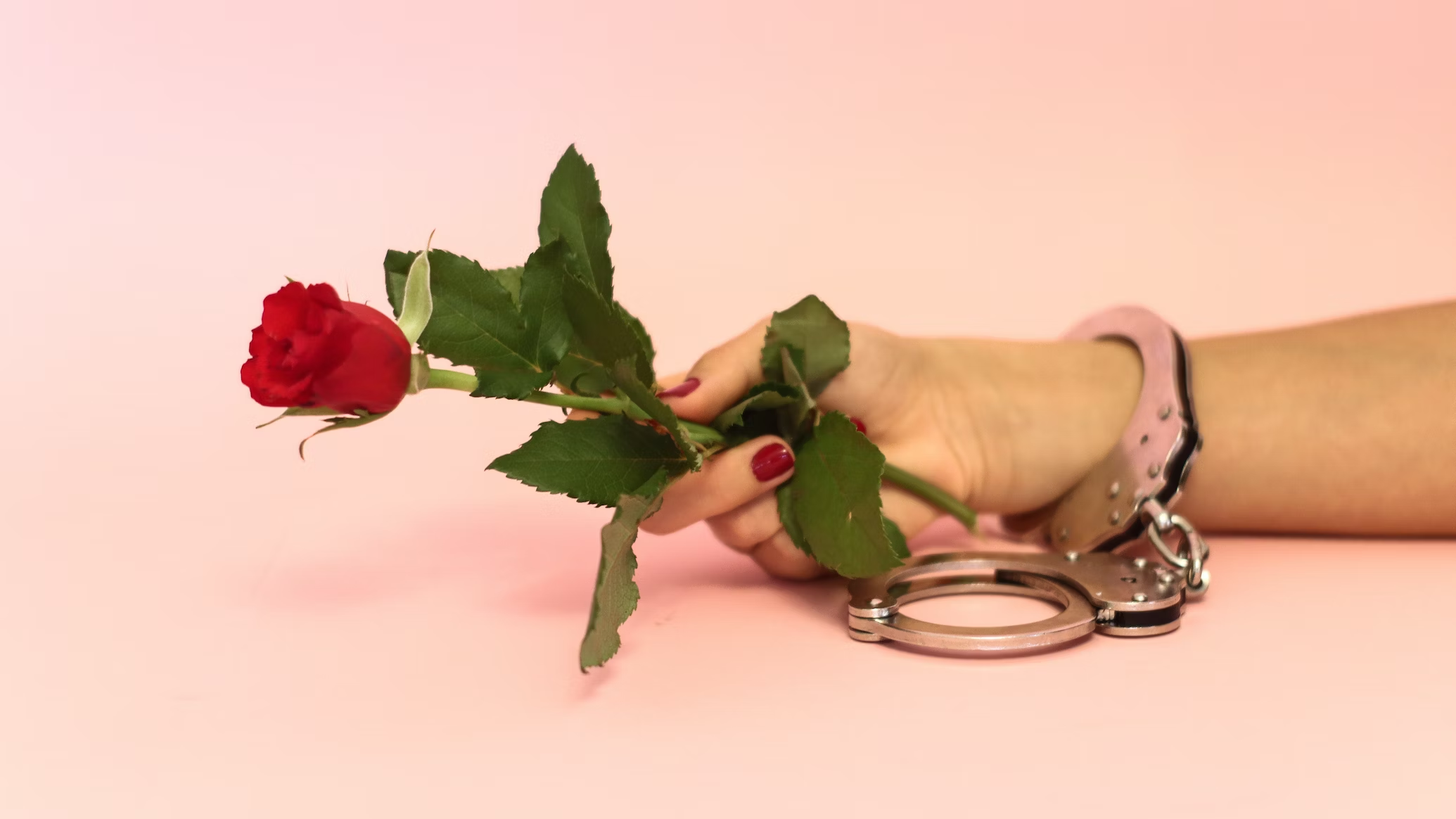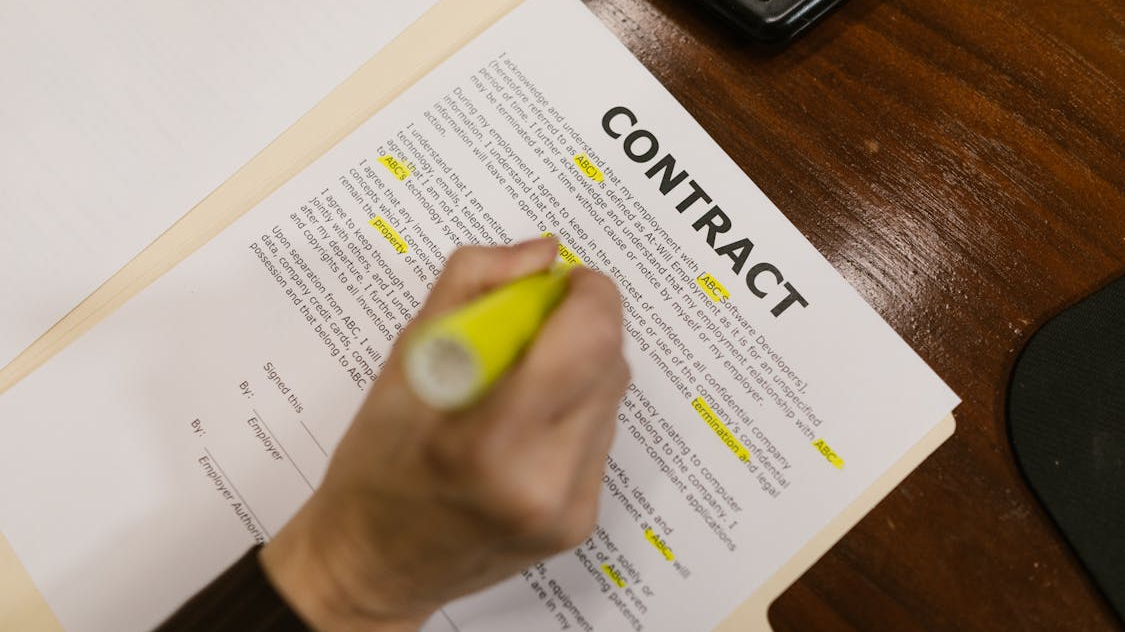This article has been updated as of 2024.
Table of Contents
When the ropes are untied and the scene fades into quiet, aftercare steps in. It’s not just a box to tick or an add-on to your play—it’s the moment where you and your partner come back to each other, decompress, and recover from the intensity of the scene. BDSM aftercare is like hitting pause after an emotional high, giving you the space to reconnect and heal. Without it, even the most thrilling moments can leave you feeling raw, distant, or unbalanced.
In this guide, we’re diving deep into BDSM aftercare—what it is, why it matters, and how to make it work for you. Whether you’re just starting out or looking to refine your rituals, you’ll find practical tips, fresh insights, and actionable steps to take your aftercare to the next level.
What You’ll Learn:
- How to handle sub-drop and dom-drop with confidence.
- Easy ways to create a customized aftercare plan that fits your dynamic.
- Tips for navigating unique scenarios like public play or long-distance care.
Aftercare is more than just recovery—it’s about connection. Let’s get started.
What Is BDSM Aftercare?
BDSM aftercare happens after the scene ends. It’s when partners take time to recover physically, emotionally, and mentally. Whether it’s addressing sore muscles, decompressing from intense emotions, or just sharing a quiet moment, aftercare is the bridge back to balance. Every person’s needs are different, which makes aftercare a highly personalized practice.
Why Aftercare Matters
The rush of a BDSM scene can trigger intense feelings and physical sensations. Activities like impact play or role-playing can flood your body with adrenaline and endorphins, which feel incredible at the moment. But as the effects wear off, partners might experience an emotional crash, like sub-drop or dom-drop. Aftercare helps cushion this transition, allowing partners to reconnect and regroup.
“Aftercare isn’t just about recovery—it’s about taking care of each other and growing from the experience together.”
Types of Aftercare
Aftercare can take many forms depending on what you and your partner need most.
- Physical Care: This could mean cleaning up bruises, hydrating, or getting cozy under a blanket.
- Emotional Reconnection: Offering praise, gentle touch, or time to talk about feelings that came up during the scene.
- Mental Processing: Reflecting on what worked, discussing boundaries, and planning for the next time.
Each type of aftercare serves a different purpose, but together, they create a safe space for both partners to reflect, recover, and feel cared for. It’s not just the end of a scene—it’s how you build trust for the next one.
Communicating Aftercare Needs Effectively

Good aftercare starts with open, honest communication. Without it, it’s easy for both partners to feel misunderstood or even neglected after a scene. Aftercare isn’t just about physical care—it’s about understanding each other’s needs and creating a space where both partners feel supported, safe, and heard.
Before the Scene: Setting Expectations
The best time to talk about aftercare is before the scene even begins. Establishing expectations early on means that no one is left guessing. This isn’t just about physical needs—it’s about emotional and psychological care as well.
Key questions to ask:
- “How do you feel about aftercare? Do you like space, or do you prefer more touch?”
- “Are there specific things that help you feel emotionally supported after play?”
- “Is there anything I should avoid doing afterward?”
Addressing Consent in Aftercare:
Consent remains a foundational principle in aftercare, requiring active respect for partners’ boundaries and preferences. Here’s how you can prioritize consent in aftercare:
- Explicit Consent: Obtain explicit verbal or non-verbal consent from your partner before initiating any physical or emotional interactions during aftercare.
- Consent Checks: Conduct regular consent checks throughout the aftercare session to ensure that both partners continue to feel safe, comfortable, and willing to participate.
- Respecting Withdrawn Consent: Respect your partner’s right to withdraw consent at any time during aftercare, without judgment or coercion.
- Reaffirming Boundaries: Reaffirm consent boundaries and agreements at the conclusion of aftercare to reinforce mutual respect and trust.
During Aftercare: Checking In and Listening
When the scene ends, it’s easy to fall into a pattern of assuming everything is fine. But checking in with each other is a critical part of aftercare. Keep it simple—just a few words can make a huge difference in how your partner feels afterward.
Examples of questions to ask:
- “How are you feeling right now?”
- “Do you need space or a moment to talk?”
- “Is there anything specific you need from me right now?”
The goal is to avoid overwhelming your partner with too many questions but to provide an opportunity for them to speak up if needed.
After the Scene: Follow-Up and Reaffirming Connection
The conversation doesn’t end when the aftercare is over. Many people experience a mental or emotional shift a few hours after play, and it’s essential to follow up later. Sending a simple message or having a debrief the next day can reinforce your partner’s well-being and connection.
Ideas for aftercare follow-up:
- Send a text or call to check in: “Hey, how are you feeling today?”
- Talk about the scene: “I really enjoyed that part when we… What about you?”
- Offer affirmations: “I’m really grateful for you, and I felt deeply connected during that scene.”
When Aftercare Needs Aren’t Met: Navigating Discomfort
Sometimes, aftercare needs aren’t immediately met, and that’s okay. The key is communicating openly when something feels off. It’s okay to ask for what you need—even after the scene has ended.
What to do if you feel neglected:
- Speak up calmly: “I didn’t get the reassurance I needed, could we check in again?”
- Offer a solution: “Next time, I’d like to have more cuddling or time to talk afterward.”
- Be compassionate: Sometimes, it’s not about neglect—it’s about missing cues or not understanding each other’s needs yet.
Understanding Sub-Drop and Dom-Drop

BDSM scenes can feel like riding a wave of adrenaline, trust, and connection. But when that wave crashes, it can leave you or your partner feeling emotionally raw, physically drained, or just “off.” These feelings are often called sub-drop and dom-drop, and they’re more common than you might think.
What Is Sub-Drop?
Sub-drop happens when submissives experience a low after the highs of a scene. It’s like coming down from an adrenaline rush but with emotional layers added in. Sub-drop can look different for everyone, but common feelings include:
- Sadness or unexplained emotional heaviness.
- Physical fatigue that doesn’t seem to match the activity level.
- Second-guessing the scene or feeling vulnerable.
What Is Dom-Drop?
Dominants experience emotional lows too, even though it’s less talked about. Dom-drop is the emotional crash that can come after leading a scene, holding responsibility, and creating an intense experience for a partner.
- Feeling mentally or emotionally drained.
- Overthinking decisions made during the scene (“Was that too much?” or “Did they really enjoy it?”).
- A sense of isolation or distance.
How to Manage Sub-Drop and Dom-Drop
Drops don’t have to ruin the experience. With awareness and preparation, you can handle them in a way that strengthens trust and connection.
- Provide physical comfort: Warm blankets, quiet time, or a grounding touch like holding hands.
- Offer reassurance: Remind them that the scene was consensual and that they did well.
- Check in emotionally: A few kind words or even just listening can make a huge difference.
- Encourage self-care: Suggest they decompress with something relaxing, like a favorite show or a hobby.
Advanced Techniques for Managing Drop

Even if you’re familiar with aftercare, managing sub-drop and dom-drop can still feel like an emotional rollercoaster. These drops often hit unexpectedly and with intensity. Knowing how to handle them—both in the moment and afterward—can make the difference between an uncomfortable experience and one that leads to growth and deeper connection.
In-the-Moment Solutions
When a drop happens, it can feel like a sudden crash after the excitement of a scene. While it’s not always preventable, there are ways to soften the impact right when it happens. The goal is to ground yourself or your partner, and bring them back to the present.
Quick fixes for sub-drop or dom-drop:
- Sensory grounding: Focus on something tangible. Touch a soft blanket, listen to calming music, or smell a familiar scent (like lavender) to reorient the senses.
- Breathing techniques: Slow, deep breaths can help calm the nervous system. Try breathing in for four counts, holding for four, and exhaling for four.
- Physical comfort: A simple hug, massage, or holding hands can help reassure your partner and bring them back to feeling safe.
These simple techniques can slow down the emotional intensity and ease the drop, helping both partners feel more grounded and emotionally present.

Long-Term Strategies for Managing Prolonged Drops
Sometimes the effects of sub-drop or dom-drop don’t hit immediately—they might show up hours or even days later. Having a plan for aftercare that extends beyond the scene is essential for managing these prolonged emotional shifts.
What helps long-term:
- Track emotional patterns: Keep a mood journal or check-in regularly with your partner. This helps spot any recurring emotional shifts, like sub-drop or dom-drop, and helps you prepare for them next time.
- Physical rest and recovery: Both physical and emotional recovery are intertwined. Make sure to rest, hydrate, and eat nourishing foods to support both the mind and body.
- Ongoing emotional support: Continue checking in with your partner, especially the day after a scene. A simple “How are you feeling now?” goes a long way. Don’t let the emotional needs of the scene disappear once the physical care is done.
These extended practices ensure that both partners have space to heal and process the emotional journey that BDSM can bring.
When You’re Alone: Self-Care After a Scene
If you’re not with your partner after a scene, managing sub-drop or dom-drop on your own can be a challenge. Having a self-care toolkit for those moments can keep the emotional crash from spiraling out of control.
Self-care strategies for alone time:
- Journal your thoughts: Writing down your feelings can help make sense of them. It allows you to process what you’ve experienced without feeling overwhelmed.
- Take a bath or shower: The physical act of cleaning up can help clear the mind and refresh your senses.
- Engage in a calming activity: Read a book, do some light stretching, or watch something comforting. The goal is to distract the mind and give it time to reset.
Community Support: Not Alone in the Drop
Sub-drop and dom-drop can feel isolating, but you don’t have to go through it alone. BDSM communities—online or local—can be a great place for support. Engaging with others who understand the experience can help you feel less alone and more connected.
Where to find support:
- BDSM online forums are great for discussing feelings of drop and getting advice on managing it.
- Local groups or events can provide a safe space for aftercare and mutual support among fellow practitioners.
- Kink-aware therapists can help work through emotional responses to scenes and offer professional support for managing drops.
Sharing the experience with others can provide emotional relief and remind you that your feelings are valid and common in the BDSM community.
Unique Aftercare Scenarios

Not all BDSM scenes are the same, and neither is the aftercare that follows them. There are unique aftercare needs that come into play depending on the type of scene, the relationship dynamics, or even whether you’re in person or connecting remotely. In these situations, aftercare requires a little extra thought to meet everyone’s needs in the best way possible.
High-Risk or Intense Play: Extra Care for Edge Play
When you engage in edge play (activities that are close to risk boundaries), the stakes are higher. Play like breath play, knife play, or intense impact can leave both physical and psychological marks that require special attention during aftercare.
What to consider:
- Physical first aid: Make sure to address any marks, cuts, or bruises immediately with antiseptic, bandages, and soothing creams. If anything seems serious, seek medical help right away.
- Emotional check-ins: Because edge play can trigger intense psychological responses, follow up with gentle conversation and reassurance. It’s important to ask how your partner feels and validate their emotional experience.
- Mental grounding: After such an intense scene, it’s key to focus on grounding techniques like deep breathing, using affirmations, or calming music to help them reconnect with their present surroundings.
Tip: High-risk play can leave emotional triggers or “scars” that linger beyond the scene. It’s vital to create a safe space for dialogue to process the experience together.
Long-Distance Relationships: Aftercare Beyond Touch
Being physically apart doesn’t make aftercare any less important. In long-distance BDSM relationships, aftercare becomes more creative. Though you can’t hold your partner’s hand or give them a hug in person, there are still meaningful ways to check in and offer support.
What works:
- Text and video check-ins: After the scene, send a reassuring text or schedule a video call to talk about how the scene went and how you’re feeling. Seeing each other’s faces and hearing comforting words can be just as effective as physical touch.
- Sending a “care package”: For emotional care, you can send affirmation cards, a playlist of calming music, or even small gifts that remind your partner they are loved and supported.
- Plan your next reunion: Talk about what you’ll do together next, which can help both partners feel more secure and excited for the next time they meet.
Public or Group Play: Discretion and Support
When you’re in a public setting or participating in group play, the aftercare dynamic shifts. There may be less privacy, and often, more people involved. This can make aftercare a little trickier, but with a little planning, it’s absolutely doable.
Key points for group or public play:
- Discretion: Aftercare in public spaces needs to be more discreet. A quick check-in, like a soft touch on the arm, or giving a private signal (like holding hands) lets your partner know you’re there for them.
- Group aftercare: If the scene involves multiple partners or group play, coordinate with everyone to make sure each person is cared for. This might involve setting up individual check-ins or finding a private space to connect afterward.
- Physical space: Sometimes, aftercare in public means simply having a moment to step aside for a breather. Take a walk or find a quiet corner to check in and ensure your partner feels safe.
The Role of Sleep Hygiene in Post-BDSM Recovery

Quality sleep is super important for your physical and emotional health, especially after a BDSM scene. Here’s how to set yourself up for better rest during aftercare:
- Create a Calming Bedtime Routine: Set a routine to help your body know it’s time to relax. You could read a book, take a warm bath, or try breathing exercises or meditation to wind down.
- Make Your Sleep Environment Comfortable: Keep your bedroom cool, dark, and quiet to help you fall asleep faster. Make sure your mattress and pillows are comfy and give you the right support.
- Limit Screen Time: Avoid looking at your phone or computer before bed. The blue light can mess with your sleep cycle. Instead, try relaxing activities that help clear your mind.
- Watch What You Eat and Drink: Be mindful of what you have before bed. Stay away from big meals, caffeine, or alcohol, since they can mess with your sleep. Go for light snacks or soothing drinks like herbal tea instead.
- Manage Stress: Take a few minutes before bed to relax your mind. You can try mindfulness exercises or muscle relaxation to calm yourself down.
Tips for Cultivating a Safe Environment:
- Non-Judgmental Attitude: Maintain a non-judgmental attitude towards your partner’s feelings, experiences, and preferences, creating a space where they feel accepted and valued.
- Confidentiality: Respect the confidentiality of aftercare discussions and disclosures, refraining from sharing sensitive information with others without your partner’s consent.
- Empowerment: Empower your partner to assert their boundaries, communicate their needs, and advocate for their emotional well-being during aftercare.
- Establishing Ground Rules: Establish ground rules for aftercare sessions that prioritize mutual respect, consent, and emotional safety for both partners.
Counseling, Professional Help & Support
- Offer Peer Support: Connect individuals with peer support groups or online communities where they can talk to others who understand their experiences and offer empathy and advice.
- Promote Self-Care: Encourage individuals to prioritize self-care activities such as mindfulness, relaxation techniques, and hobbies that bring them joy and relaxation outside of BDSM activities.
- Provide Education: Offer educational resources on coping strategies, boundary-setting, and communication skills within BDSM relationships to empower individuals to navigate challenges effectively.
- Advocate for Inclusivity: Advocate for mental health services and resources that are inclusive of diverse identities within the BDSM community, ensuring access for all individuals regardless of sexual orientation, gender identity, or relationship structure.
- Continued Learning: Encourage ongoing education and learning about mental health, trauma, and BDSM dynamics to promote understanding and effective support within the community.
Legal Considerations

Understanding the legal implications of BDSM activities and aftercare practices is essential for protecting the rights and safety of practitioners. Consider the following legal considerations:
- Consent Education: Offer resources and workshops on understanding consent laws and risk management principles specific to BDSM activities and aftercare, empowering individuals to make informed decisions and prioritize safety.
- Contractual Agreements: Discuss the importance of clear communication and documentation through contracts and legal agreements to outline aftercare responsibilities and minimize potential legal risks or misunderstandings.
- Legal Challenges: Address the legal complexities surrounding consent in BDSM practices, highlighting the need for legal protections and advocating for reforms that recognize and respect the rights of BDSM practitioners.
- Privacy Protection: Provide guidance on maintaining privacy and confidentiality in aftercare settings, both in-person and online, to ensure individuals’ personal information and experiences are kept confidential and secure.
- Advocacy Efforts: Encourage engagement in advocacy and activism to promote legal reforms and policies that protect the rights and autonomy of BDSM practitioners, fostering a safer and more supportive legal environment for the community.
Final Thoughts
In the end, it’s important to remember that aftercare is all about caring for each other and keeping our connections strong in BDSM relationships. By cuddling, talking openly, and being flexible, we can grow closer and support each other better. It’s also good to learn about consent and get help from professionals when we need it. With love, understanding, and a willingness to learn, we can make sure our relationships are happy, healthy, and full of trust.
Want More Useful Articles?
- 10 Tips On How to Prepare a BDSM Scene So Everyone Has Fun
- St. Andrew’s Cross For Beginners: History, Use, and BDSM Safety Guide
- The Preeminent BDSM Contract Guide – Pleasure & Pain Through Ink Empowerment
- 101 BDSM Humiliation & Degradation Ideas to Make Your Sub Squirm


